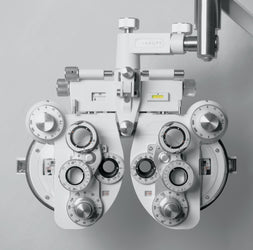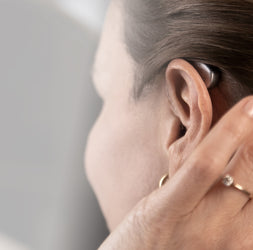What is myopia?
Myopia is more commonly called nearsightedness, and is the inability to see objects clearly at a distance. This condition can be corrected using glasses or contact lenses.What causes myopia?
Evidence suggests that behavioral and lifestyle factors along with genetics, are contributing to the myopia 'epidemic'.It’s known that myopia in children is more likely to be present when the condition is already affecting their parents. The risk is nearly 1 in 2 children becoming myopic when both parents already are, and 1 in 3 when one parent is myopic. When neither parent is myopic, the risk lowers to 1 in 4.
Modern lifestyle also seems a contributing factor to the myopia ‘epidemic’. Children nowadays spend insufficient time outdoors. Their eyes are constantly exposed to digital devices for increasingly longer time as children are often busy with computers and portable devices such as phones and tablets.
Myopia Control in children
If you’ve have worn glasses or contact lenses all your life, start managing myopia in children as young as 8 years of age might seem early. However, when myopia develops in young children, it usually progresses faster and more severely, bringing all the associated discomforts and risks.Worsening myopia may contribute to more severe eye health complications and potentially blinding conditions later in life, including retinal detachment, myopic maculopathy, glaucoma, and cataracts. Starting myopia management early is crucial in order to minimise risk.
Nearsightedness, especially when undiagnosed, can also cause developmental issues in your child’s education, social relations, and learning. Take a look at this myopia simulator to see what your child’s vision looks like with myopia.
Myopia Control: we can manage myopia together
Keep your child’s future brilliant. The first step towards this goal is booking a comprehensive eye exam with our expert optometrists. We offer different Myopia Control options, including special spectacle lenses and contact lenses designed to slow down the progression of myopia in children.HOYA MIYOSMART Spectacle Lenses
MiyoSmart are revolutionary lenses developed by leading manufacturer HOYA. MiyoSmart is proven to curb myopia progression and axial elongation in children on average by 59%, according to a 2-year clinical trial results on 160 children aged 8-13.With the exclusive non-invasive D.I.M.S. Technology, the lens provides a full vision correction and has a ring shaped treatment zone to slow down myopia progression. The combination of the focus zone and treatment zone provides clear vision and manages myopia simultaneously.
MiyoSmart lenses also incorporates the EyeShield Technology for an easy to clean, anti-reflective, highly resistant coating. Simply perfect for children's active lifestyle.
MiyoSmart lenses are easy to fit, and look just like regular single vision lenses.
MiSight® 1 day – children contact lenses
MiSight 1 Day are child-friendly daily disposable contact lenses clinically proven to slow the progression of nearsightedness by 59% on average in children aged 8-12 at the initiation of treatment.The MiSight 1 Day (omafilcon A) Soft (Hydrophilic) Contact Lenses for Daily Wear are made from a "water-loving" (hydrophilic) material that has the ability to absorb water, making the lens soft and flexible.
Of children aged 8-15, who had never worn contact lenses before:
- 95-100% of age-appropriate children said they preferred wearing their MiSight 1 day contact lenses over wearing their glasses.
- Children as young as 8 years were able to handle their lenses confidently soon after initial fitting.
HOYA MIYOSMART lenses and MiSight® 1 Day Contact Lenses are available in our practices
If you're interested in knowing more about myopia control options, please feel free to get in touch or visit your nearest Eye Emporium practice. Our expert staff will be able to answer your questions and advise on the best options for treatment.Please visit our booking page to make an appointment, or contact your local practice.
Article source: CooperVision








